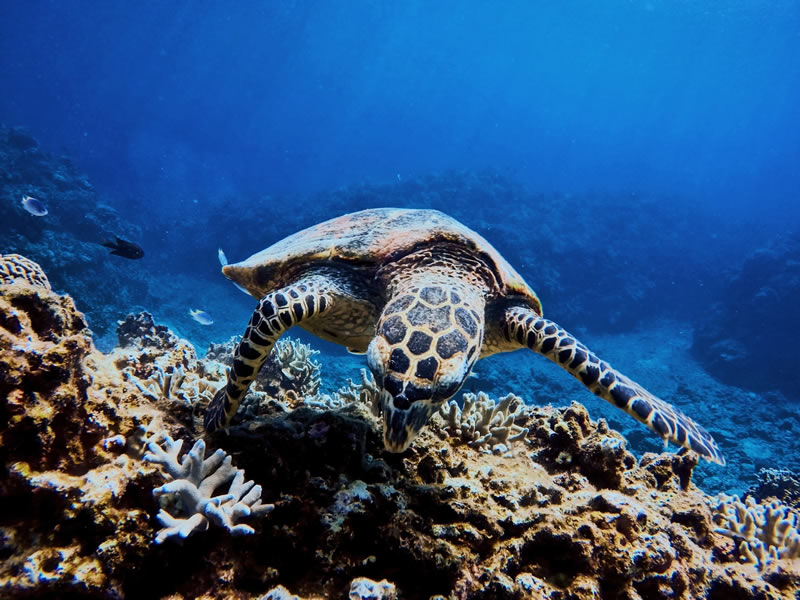
Diving in Sri Lanka
Diving in Sri Lanka is a hot topic because beyond the sandy beaches of Sri Lanka is the azure waters and beneath it is a colourful underwater world teeming with life. With a wide variety of coral species, whales, dolphins, turtles and sites are heavens for divers and snorkelers of all calibre, this tropical island offers breathtaking experience below the waves as well as above it.
The outermost wall of Sri Lanka is formed by the waves of the Indian Ocean; island’s border is formed by the white coloured line that comes to life as the waves end at the edge of the beach. Sri Lanka is proudly own more than 1300 km of pristine beaches. The beaches attract hundreds of thousands of beach holiday lovers every year and west coast beaches are key attractions on the island provide many interesting activities for travellers.

The coral reefs of Sri Lanka are home for millions of exotic sea creature like reef fish, which are tiny and vibrant, moray eels and tuna. They team up with a myriad of other sea creatures such as octopus, sea turtles, whales, dolphins, lobster and squid.
Encountering blue whales off southern Sri Lanka is a rare opportunity for most visitors of Sri Lanka because it is not just a look into the biggest creatures in the world but it is a closer look at their doorstep.

The island water resources, as well as the Indian Ocean around the island, is full of activity, whitewater rafting, kayaking and boating are the most popular activities in the inland water resources such as Rivers, Lakes and Lagoons while snorkelling is the most popular saltwater activity and most effective way of exploring the rich underwater world around Sri Lanka.

Most parts of the sea around the island have isolated patches of coral reefs; there are also many secret experiences to be had, such as snorkelling with sea turtles, exploring thousands of years old whip wrecks. The underwater kingdom is a very colourful ad vibrant, which exist owing to more than 200 species of coral.

The dominating colour of the underwater world around Sri Lanka is mainly blue because of even the very clear water filters and absorbs the reddish part of the colour spectrum. However, the immediate sea around the island is very shallow and mostly in the turquoise colour that seems almost not real. As the depth increases the colour changes into the deep royal blue, so is the clarity of the water due to the less sand and sediment.

The surface water temperature of the sea is hovering around 32C and water temperature of the water is 27C, however, it is highly recommended to wear a rash vest or something similar while snorkelling in Sri Lanka, in order to prevent the possible sunburns due to the oppressive heat of the sun. Wet suits are required for diving in Sri Lanka, and they can be obtained all around the island, wet suits help you to maintain the body temperature when the water temperature lowered in the deep sea.
The water around the island is a home for 5 species of sea turtles namely Leatherback Turtle, Green Turtle, Hawksbill Turtle, Loggerhead Turtle, Oliver Ridley Turtle. All 5 species of turtles are categorized as endangered animals and included in the IUCN red list.
However the sea turtle occurring often in the Sri Lankan waters and in some cases you are able to witness the turtles near the beach, especially in the areas such as Hikkaduwa, Mirissa beach, Unawatuna beach and Bentota beach.

Rising from the fascinating underwater world around the island, there is a true feeling of discovering an oasis in the middle of the Indian Ocean, which is exactly what this fascinating tropical island offers to its visitors.
Green turtle and hawksbill turtles are the most common species of sea turtles occurs in the Sri Lankan waters. The Hawksbill turtle such as the one in the picture can be easily identified by the sharp curved beak. Sea sponges that grow on the rocks and corals are eaten by hawksbill turtles and it makes the largest portion of their diets, jellyfish, microalgae and anemones share the rest of the diet of Hawksbill turtle; these turtles peck and scrape rocks and coral with their beak while they eat sponges.
